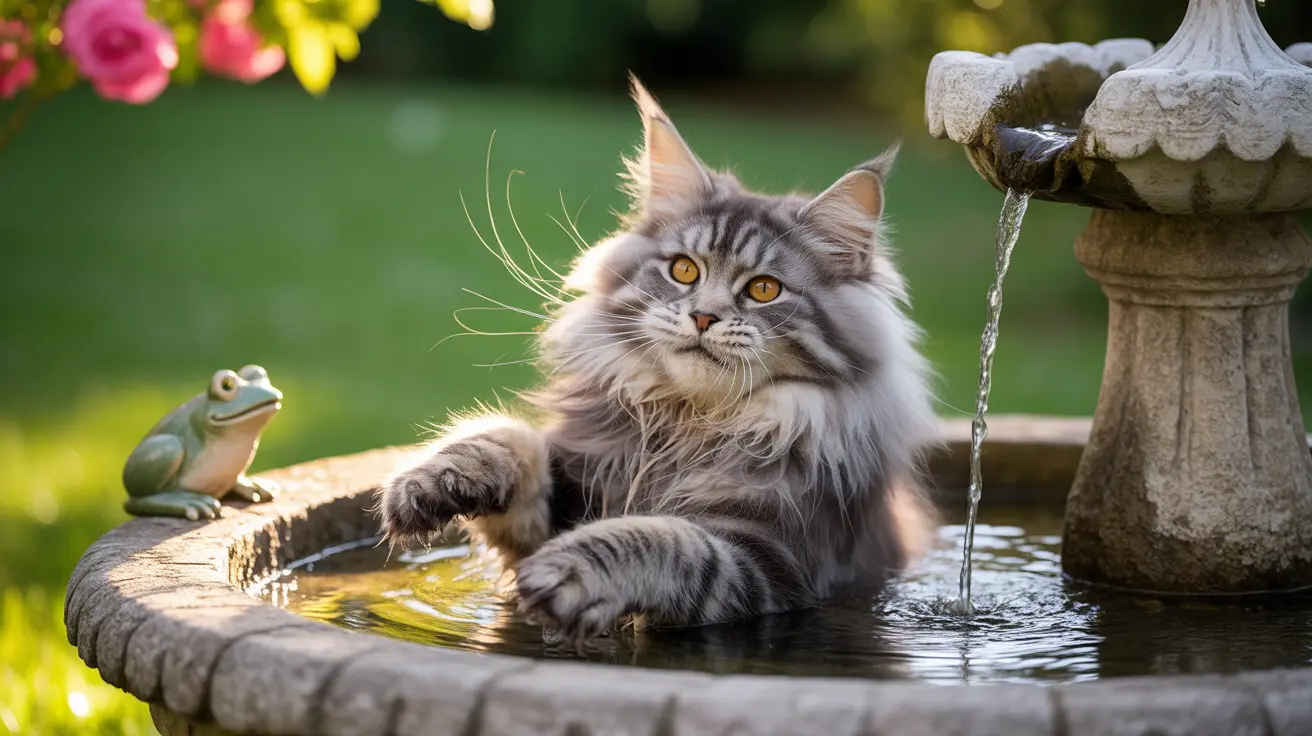The Evolutionary Background of Cats and Water
Domestic cats' complex relationship with water stems from their desert-dwelling ancestors. Unlike tigers, who regularly swim to cool off and hunt, house cats descended from Near Eastern wildcats that rarely encountered large bodies of water. This heritage explains why most domestic cats aren't natural water enthusiasts.
However, some cats have evolved differently, particularly breeds from regions where water interaction was necessary for survival. These cats developed physical adaptations that make water activities more comfortable and enjoyable.
Water-Loving Cat Breeds
Several cat breeds are renowned for their unusual affinity for water. The Turkish Van, often called "the swimming cat," leads this group with its water-resistant coat and natural swimming ability. Maine Coons, with their thick, water-repellent fur, frequently show interest in water play.
- Bengals, who inherit their water enthusiasm from wild ancestors
- Norwegian Forest Cats, equipped with water-resistant coats
- Savannahs, carrying their wild serval heritage's love for water
- Abyssinians, known for their playful water interactions
The Science Behind Water Attraction
A cat's interest in water often relates to their natural hunting instincts. Moving water catches light and creates movement patterns that trigger their prey drive. This explains why many cats are fascinated by running faucets or fountain water features, even if they dislike being fully wet.
Additionally, cats instinctively recognize running water as fresher and safer to drink than standing water, a behavior inherited from their wild ancestors. This instinct can manifest as a general interest in moving water sources.
Early Experiences and Environmental Factors
A cat's early exposure to water significantly influences their adult attitude toward it. Kittens introduced to water positively during their critical socialization period (2-7 weeks) are more likely to develop comfort with water activities. Show cats, who experience regular bathing from a young age, often maintain this tolerance into adulthood.
Environmental factors also play a role. Cats living in households where water play is normalized or who have access to safe water features may develop increased comfort and interest in water interactions.
Safety Considerations for Water-Loving Cats
While it's exciting to have a water-loving cat, safety should always be the priority. Never force a cat into water, and always supervise water activities. Ensure pools or water features have easy exit points, and consider using a cat-specific life jacket for deeper water activities.
Be mindful of water temperature and chemical content, especially in pools or outdoor water sources. Even water-loving cats need protection from hypothermia and potentially harmful substances.
Frequently Asked Questions
Why do some cats enjoy playing with or drinking running water more than still water?
Cats often prefer running water because it's instinctively perceived as fresher and safer than standing water. The movement and sound also trigger their natural hunting instincts, making it more engaging and interesting.
Which cat breeds are known for their unusual fondness for water and swimming?
The Turkish Van, Maine Coon, Bengal, Norwegian Forest Cat, Savannah, and Abyssinian breeds are particularly known for their positive relationship with water. However, individual personality still plays a significant role regardless of breed.
How does a cat's early experience influence its attitude toward water?
Early positive experiences with water during the kitten's socialization period (2-7 weeks) can significantly impact their lifelong attitude toward water. Gentle, positive exposure during this time often results in greater water acceptance.
Can all cats swim, and is swimming safe for my cat?
While all healthy cats have a natural ability to swim, not all enjoy or feel comfortable doing so. Swimming should always be voluntary, supervised, and done in safe conditions with easy exit points available.
What are the benefits and risks of letting my cat interact with water or swim?
Benefits include physical exercise, mental stimulation, and potential therapeutic value for joint issues. Risks include drowning, hypothermia, and exposure to harmful chemicals or bacteria. Always supervise water activities and ensure proper safety measures are in place.






